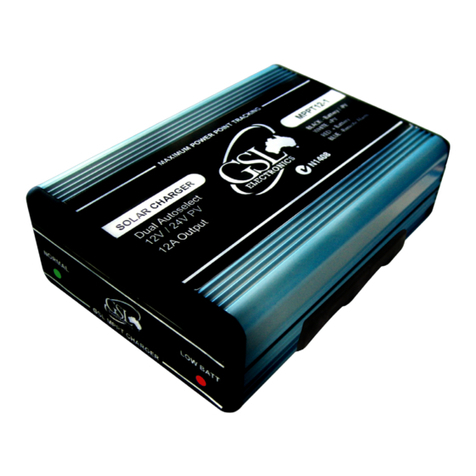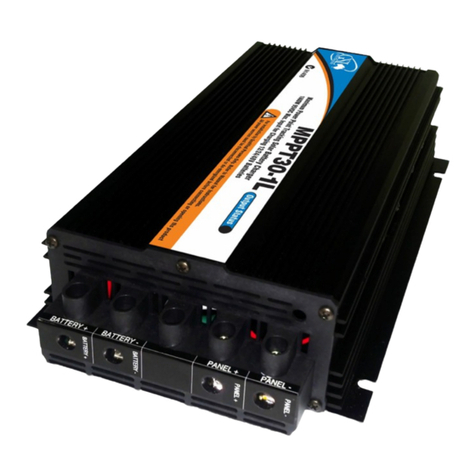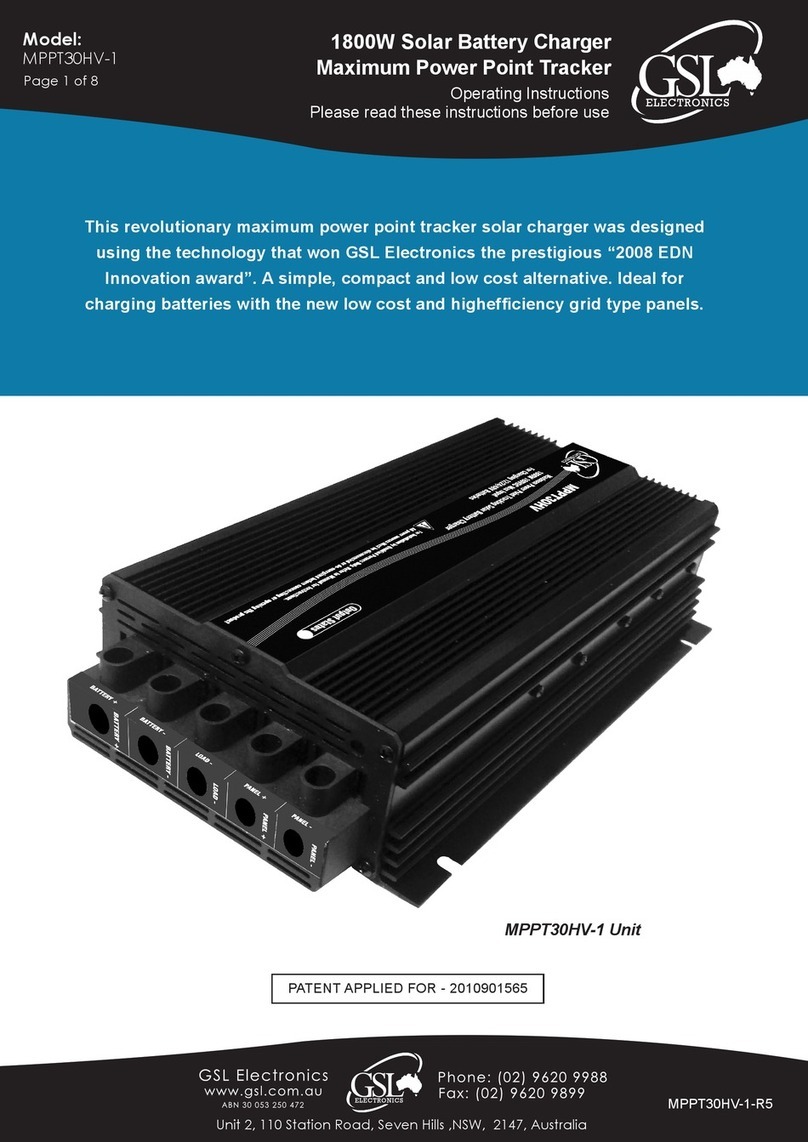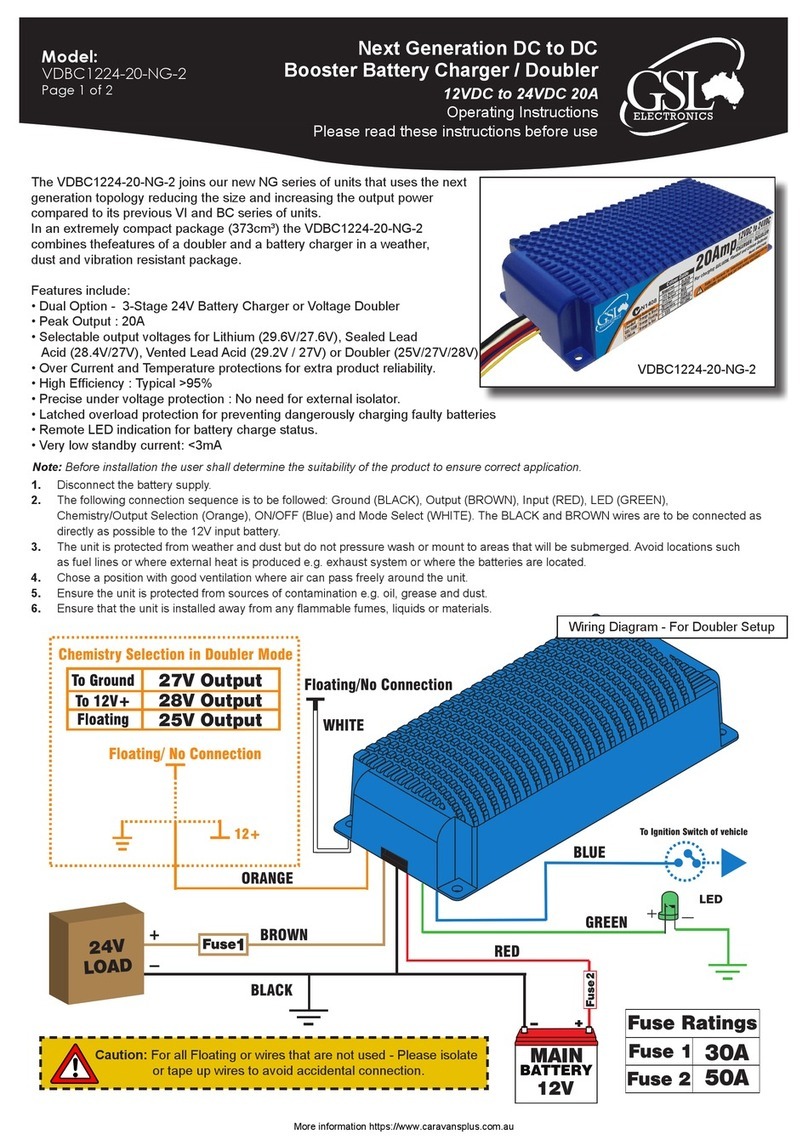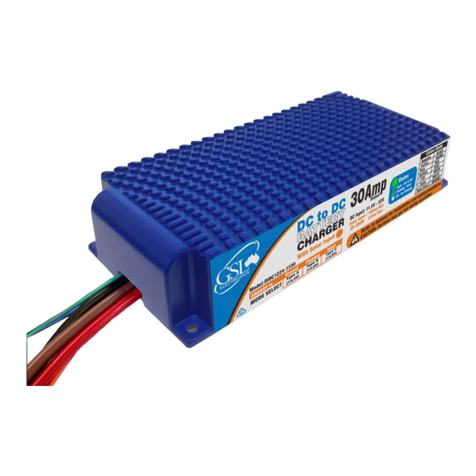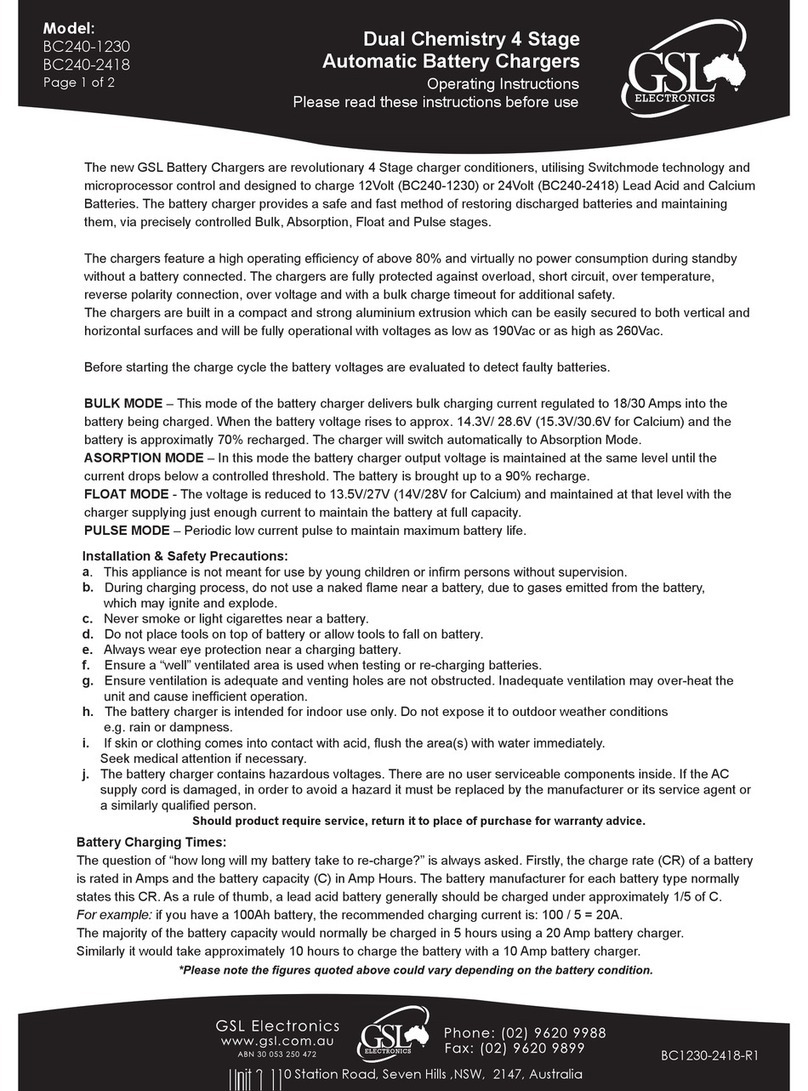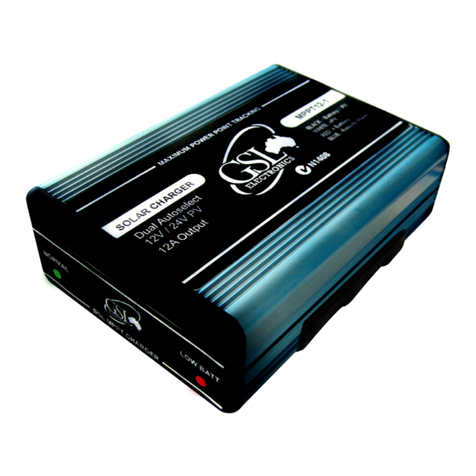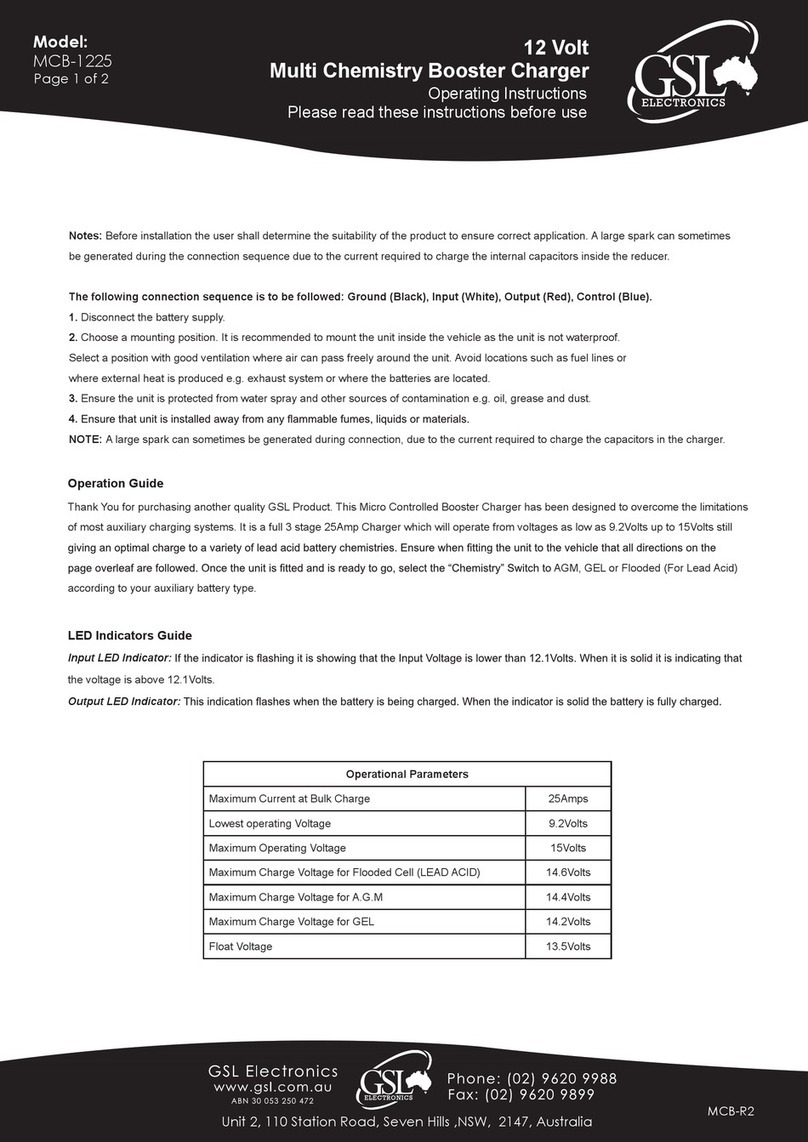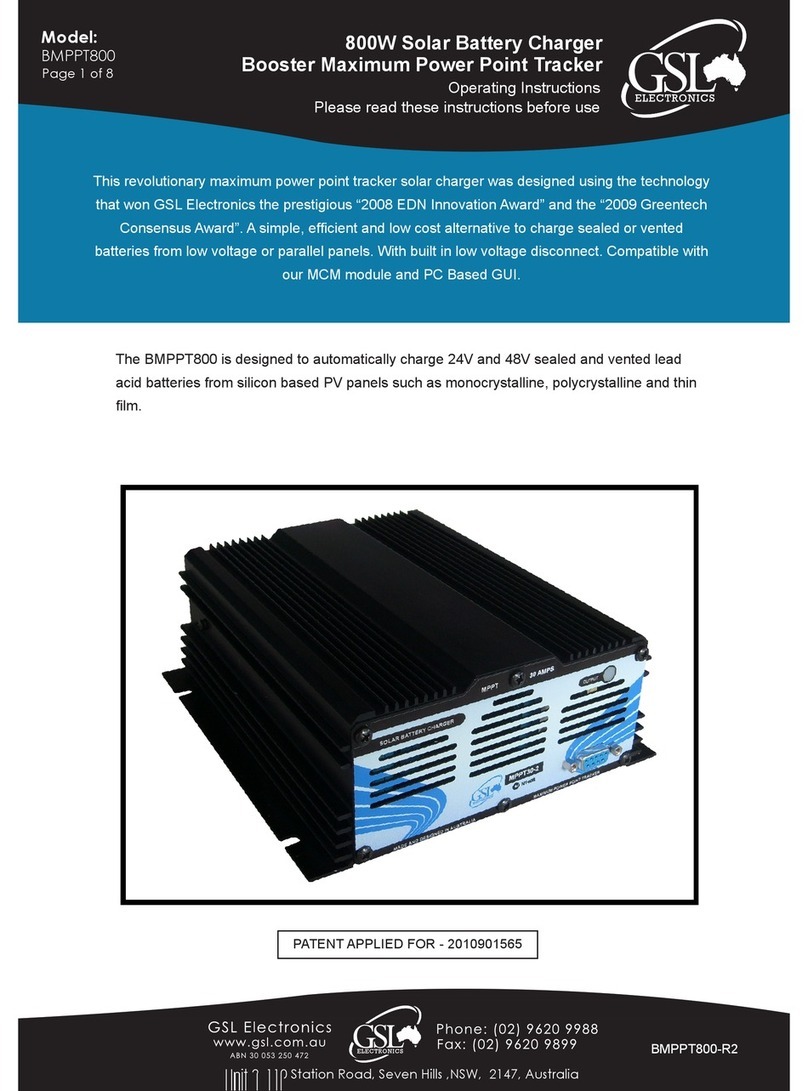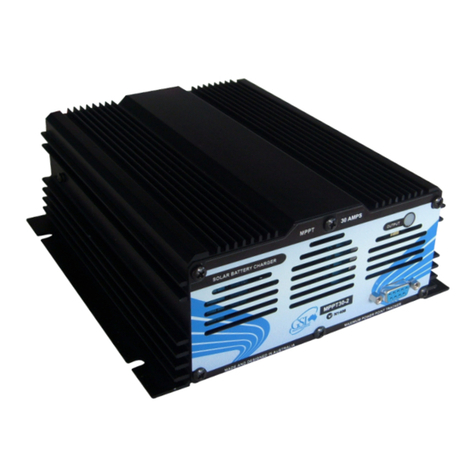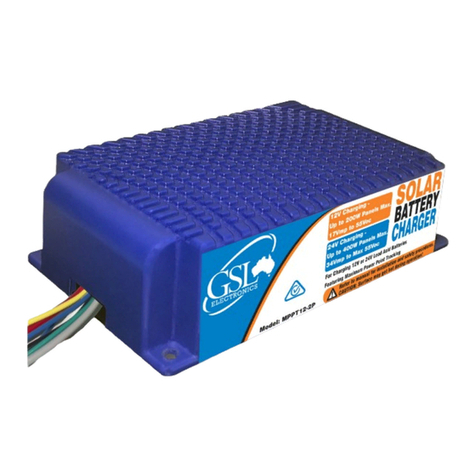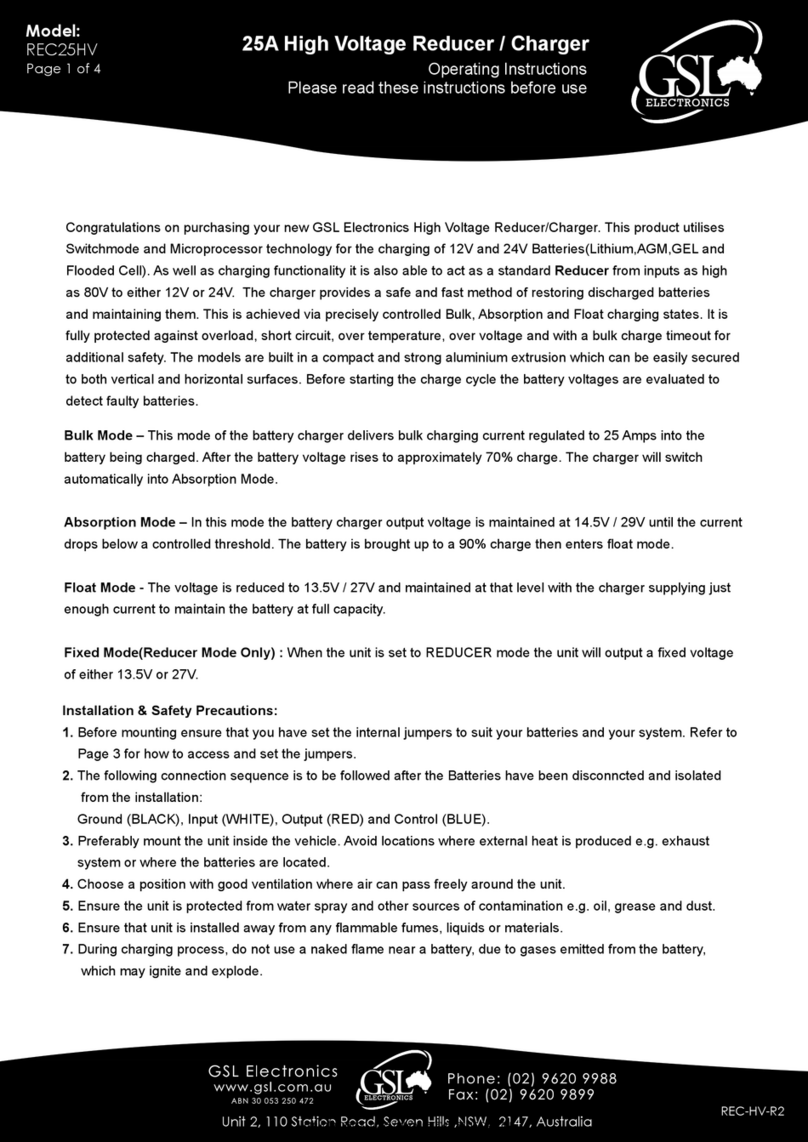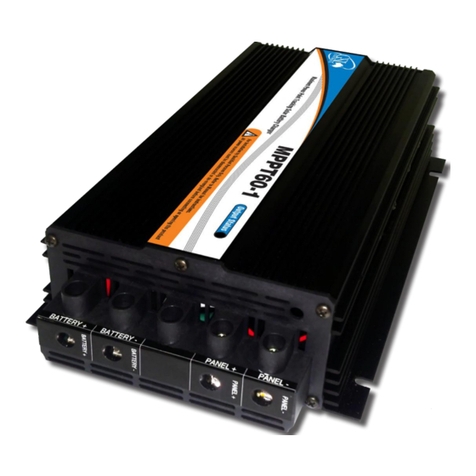
Page 8 of 8
Model:
MPPT10HV 400W Solar Charger
Maximum Power Point Tracker
Operating Instructions
Please read these instructions before use
Unit 2, 110 Station Road, Seven Hills ,NSW, 2147, Australia
Warranty Conditions: The product is warranted to be free from defects in materials and workmanship under normal use and service for a period of 24 months from the
date of sale. This warranty covers defective parts and workmanship provided that the product is shipped prepaid to the seller within 24 months of purchase of goods.
This warranty is limited to the repair or replacement (at the manufacturers’ discretion) of parts and shipping prepaid to the original despatch destination. We regret that no
liability can be accepted for consequential or special damages of any kind howsoever arising in connection with products supplied by the seller. This warranty is in lieu of
all other warranties expressed or implied. No representative is authorised to assume for the seller any other liability in connection with the seller’s products.
MPPT FAQs
Q: What is an MPPT?
MPPT stands for Maximum Power Point Tracker and is a specialised converter designed to maintain the PV voltage at the level in which it
delivers maximum power to the load or battery. The nominal panel output power can only be ensured with the use of an MPPT.
Q: What are the GSL MPPTs advantages compared to standard solar regulators?
1. Suitable for new lower cost high efciency grid type panels since the GSL MPPT can efciently charge the batteries from relatively high
voltage, say 12V batteries from 36V MPP panels.
2. Less interference and more accurate voltages during absorption and oat.
Q: What output can I expect from a 150W or 200W MPPT?
1. The maximum bulk charge current with a 12V battery and 150W panel is approximately 12A, so you can expect about 40AH per day which
is a 40W load for about 10 hours.
2. The maximum bulk charge current with a 24V battery and a 200W panel is about 8A so you can expect about 30AH which is a 40W load
for about 15 hours.
Q: Why are MPPT used mainly in high power systems?
Until now and despite their overwhelming advantages MPPTs have been excluded from low power systems because of cost. The new GSL
MPPT specically designed for low power makes economic sense even in small systems.
Q: What sort of batteries should I use?
1. A deep cycle battery is a must due to the cyclical nature of solar systems with a recommended battery capacity of at least 60AH.
2. A larger battery will not only give longer run time during low light but also will be able to avoid available PV power being unstored such as
when the battery reaches the oat stage.
Q: How does PV temperatures affects charge current?
Temperature increase brings down the PVs maximum power point voltage reducing the MPPTs current gain available. In principle at 25C it is
possible to achieve 30% gain but at 40C (A more realistic average temperature) about 20% is still available.
Q: What happens at low PV currents?
The MPPT will outperform the conventional regulator above 4% of nominal panel power. Below 4%, 6W in a 150W panel, the MPPT will have
a slightly lower output current than a non MPPT.
MPPT10HV R3
Q: Is interference possible? and If so what do I do?
GSL’s MPPTs produce far less interference than conventional solar regulator during the absorption and oat stages, that
is during most of its operating time, and its designed to comply with local and international EMI standards however some
interference is still possible. If interference occurs rst try and reorient the aerial or move the sensitive equipment away from the
MPPT wires. Ensure the MPPT chassis is grounded. Grounding a battery terminal may also help and nally you can try adding
ferrite clamps.
